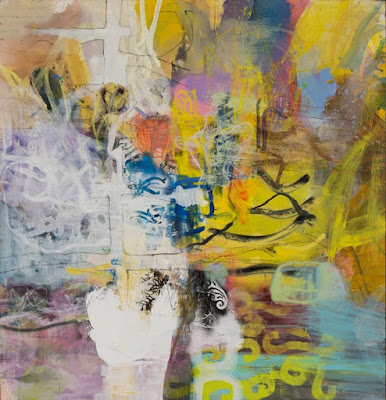"Color Space" es la primera exposición individual del artista norteamericano Alex Brewer / Hense en España.
Para esta exposición, el artista presenta su trabajo más reciente, realizado en diversos medios y formatos. En ellos, incluye formas que elabora previamente, como dibujos o recortes, y que más tarde combina con otras generadas de manera completamente espontánea sobre el lienzo. Así, "Color Space" es una investigación acerca de los resultados que se producen tras simplificar las características propias de su producción anterior, centrándose en conseguir composiciones más esenciales y depuradas.
Con sus obras sobre lienzo, tabla o papel, Hense explora formas y colores propios de las referencias visuales que conforman su producción en murales públicos. De esta forma, indaga en las relaciones de ida y vuelta que se dan entre sus proyectos al aire libre y su trabajo de estudio: "Un mural puede influir en una pintura y una pintura puede influir en una escultura u obra en papel y viceversa. Como artista que trabaja tanto en espacios públicos como en galerías, siempre disfruto lidiando con los desafíos y las marcadas diferencias entre estos dos espacios únicos".
"Color Space" is the first solo show of the American artist Alex Brewer / Hense in Spain.
For this exhibition, the artist presents his recent artwork, realized in different media and formats. These new paintings are a combination of spontaneous and predetermined processes. Some of the forms that he has been using lately either begin as drawings, cut paper or are completely spontaneously conceived.
Most of his last years production, is related to stripping things down to the core language of some of his previous works, by focusing on simple compositions. In these terms, the monotypes on paper are essentially explorations of color and form using visual references that he pulls from his paintings and murals. Thus, he explores the round-trip relationships between his public art projects and his studio practice: "A mural may inform a painting and a painting may inform a sculpture or work on paper and vice versa. As an artist who works in both public space and gallery settings, I always enjoy dealing with the challenges and stark differences of the two unique spaces".



































